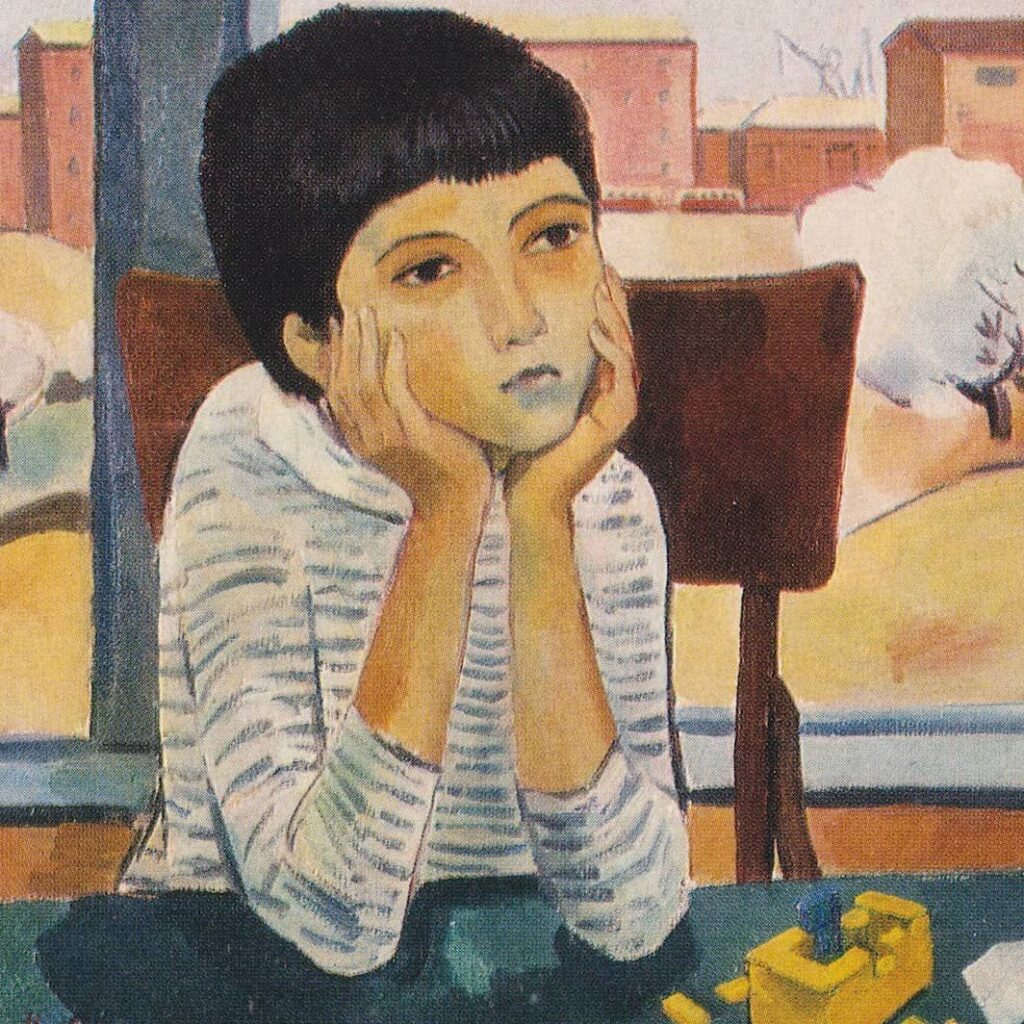My Name Is Aram
William Saroyan
1940
(An open and curious boy growing up in an Armenian community in California encounters the rich quirkiness of his family and neighbors.)

Writing from the spirit of memory. Not a record of specific memories, but effortless intuitive writing that naturally conjures the ethos, tinged with wistfulness, that can accompany the distant remembrance of simpler times. This was the inspiration of William Saroyan as he sat down, and boom, suddenly there appears what would become his best loved book of stories. With all the intense effort I put into my other books, this one (I’m imagining he thought), the one that practically wrote itself, the one in which I warned readers that nothing extraordinary would happen, this is the one?! In his own incredulous (or perhaps disingenuous) words, he “does not believe this manner of writing is the way to get a message to go high-rolling down the ages”. Its greatest value, he thought (not without satire), would be to disqualify him for membership in prestigious literary societies. One can understand why he was thinking this way. In the second half of the 1930s, having risen to the top of the charts, so to speak, with his debut collection of stories including “The Daring Young Man on the Flying Trapeze”, all eyes were on William Saroyan. Surrounded by the effervescing produce of Hemingway, Steinbeck, Faulkner, Fitzgerald, the pressure was on Saroyan to be likewise that great writer. And he did have such ambitions for himself. Yet, something drove him when starting My Name Is Aram to leave society’s gauntlet where it was thrown… or else maybe to find a different way to pick it up. My hunch (with hardly any evidence to back it up) is that he looked at this literary world he had entered, and decided that one helpful thing he could do right away is to center or root himself—to ask himself what had been important in making him who he is. Then, to search that out, or to convey it, he sat back and reminisced (pen in hand) about his humble early life in the immigrant Armenian fruit-growing community of the San Joaquin Valley, California. His goal was not to expose the suffering of the poor or rail eloquently against social ills, not to decry materialism or the threat of fascism, not to create a work of stylistic genious. Rather, his goal was simply to paint vignettes of the sorts of characters that were his family and neighbors in pre-Depression Fresno—to smile at them, to paint them in a sympathetic light, and to draw gently from them what practical wisdom and wit influenced his own development and might be worth preserving for others. Thus we have the young Aram Garoghlanian. And as the author says of himself, though he might not be Aram, he is certainly not not Aram.
The Oregon Trail
Francis Parkman
1848
(Horses, rifles, and knives see a party of adventurers through the land of expansive plains, craggy mountains, buffalo, and the Sioux.)

“Shaw! Buddy!” Imagine a young, spontaneous Yankee calling out to his friend, both of them just out of college. He proposes that they leave the effeminate comforts of the East, and spend a summer adventuring westward into the untamed lands where life is dangerous and fascinating. Francis Parkman explains (ch.II):
“The restlessness, the love of wilds and hatred of cities, natural perhaps in early years to every unperverted son of Adam, was not our only motive for undertaking the present journey. My companion hoped to shake off the effects of a disorder that had impaired a constitution originally hardy and robust; and I was anxious to pursue some inquiries relative to the character and usages of remote Indian nations, being already familiar with many of the border tribes.”
So they did it. In 1846. Francis was 23. And the recollections of that journey, The Oregon Trail: Sketches of Prairie and Rocky-Mountain Life, remain with us as one of the best treatments of the early West that we will ever have. Parkman’s prose has the feel of a chronicle—it is obviously nonfiction, a travelogue. But it is not a ponderous journal of trivia and redundancy through which we must wade for hours to find the few interesting episodes; nor is each sunset a springboard for a forced flight of sentimental fancy in poor imitation of Byron’s Childe Harold or other Old World sketches. Rather, it is an engaging selection of vignettes, personalities, and anecdotes that admit us to the ranks of the “ragamuffin cavalcade” that was Parkman’s expedition. Parkman’s writing is like Parkman himself—the stereotypical American at his best, one might say: direct yet perceptive, practical yet romantic, hearty yet insightful.
Uncle Tom’s Cabin
Harriet Beecher Stowe
1852
(Two slaves struggle mightily: one for her liberty, the other for his integrity.)

This novel, the best selling book in the nineteenth century besides the Bible, is a remarkably forceful argument against the world’s most blatant form of widespread institutionalized violation of human rights. It is a collage of slave lives and lifestyles assembled with a thin glue of plot, all combining to urge our sympathies with the slaves and our antipathy to the injustice of their condition. It is an effort to bring free people to the realization that slaves are real persons who have the same sorts of spirits and minds as their masters, and yet they are and will always be subject to all sorts of anguish, suffering, and torture until slavery is abolished. “It is a comfort to hope,” Harriet Beecher Stowe writes in the Preface, “as so many of the world’s sorrows and wrongs have, from age to age, been lived down, so a time shall come when sketches similar to these shall be valuable only as memorials of what has long ceased to be.” We can be thankful that the author’s hope came true– the book served phenomenally well the purpose for which Stowe designed it. Testament to this are its enormous sales, the several hasty rebuttal “slavery isn’t so bad” novels, and, perhaps more than anything else, the comment of Abraham Lincoln when he met the author, calling her the “little woman whose book started this big war”.
Breakfast of Champions
Kurt Vonnegut, Jr.
1973
(Little do a frustrated writer and a troubled car dealer realize, that their impolite author is using their journey to meet each other as an excuse to mastermind a deconstruction of modern values!)

Sort of The Temptation of St. Anthony, sort of by Rabo Karabekian, 1950. Sort of Sateen Dura-Luxe acrylic wall paint and day-glo tape. 20 x 16 feet. This can sort of be seen in the Midland City Art Gallery, to which it was sort of sold by the artist for $50,000.
A Vonnegut novel grows on you… like an exquisite acquired taste… or else a nagging corn on the foot. All three experiences are underestimated at first, and with time a realization dawns that there is something here that cannot be ignored. Some deride Breakfast of Champions as one of his “lesser”, although more popular, novels. For my part, I think that here we have a wine that is initially very peculiar on the palate, and its apparent confusion will conceal the vibrant undertones if one is not careful to taste it slowly and carefully. Or else, here we have a blasted gadfly of a corn that starts insidiously in a part of the foot’s ball that is unlikely to feel it until the thing has incubated for a mighty long time, insinuating deeply into one’s tissues. And when finally noticed, ouch does that root go deep!



Twain’s stories
February 9, 2015 / Leave a comment
Mark Twain (Samuel Clemens)
1865-1890
(A champion of common sense and nonsense casually delivers his colorful yarns, witty satires, and twisty dramas.)
Sitting with Mark Twain when he’s in a storytelling mood, we get to know the man—or at least he leads us to believe we get to know him. He lets us in on private jokes; he talks to us freely and without affected polish, perhaps puffing on his pipe in the middle of a sentence; and he doesn’t mind making clever offhand remarks about even the touchiest of matters. And, to reciprocate the casual friendship, we allow him to wander on tangents, even if it prevents him from ever getting to his point; and we don’t let on that we mind when he decides not to tell us the end of a story, or when he makes fun of something that we happen to like; and, especially, we just don’t get too critical with him in general. Since Twain’s favorite literary pastime is to smirk at people who take themselves too seriously, when we take him too seriously the joke is on us! Besides, the path of his narrative, though unpredictable, is as organic and spontaneous as a stream– who can criticize a stream?
(more…)